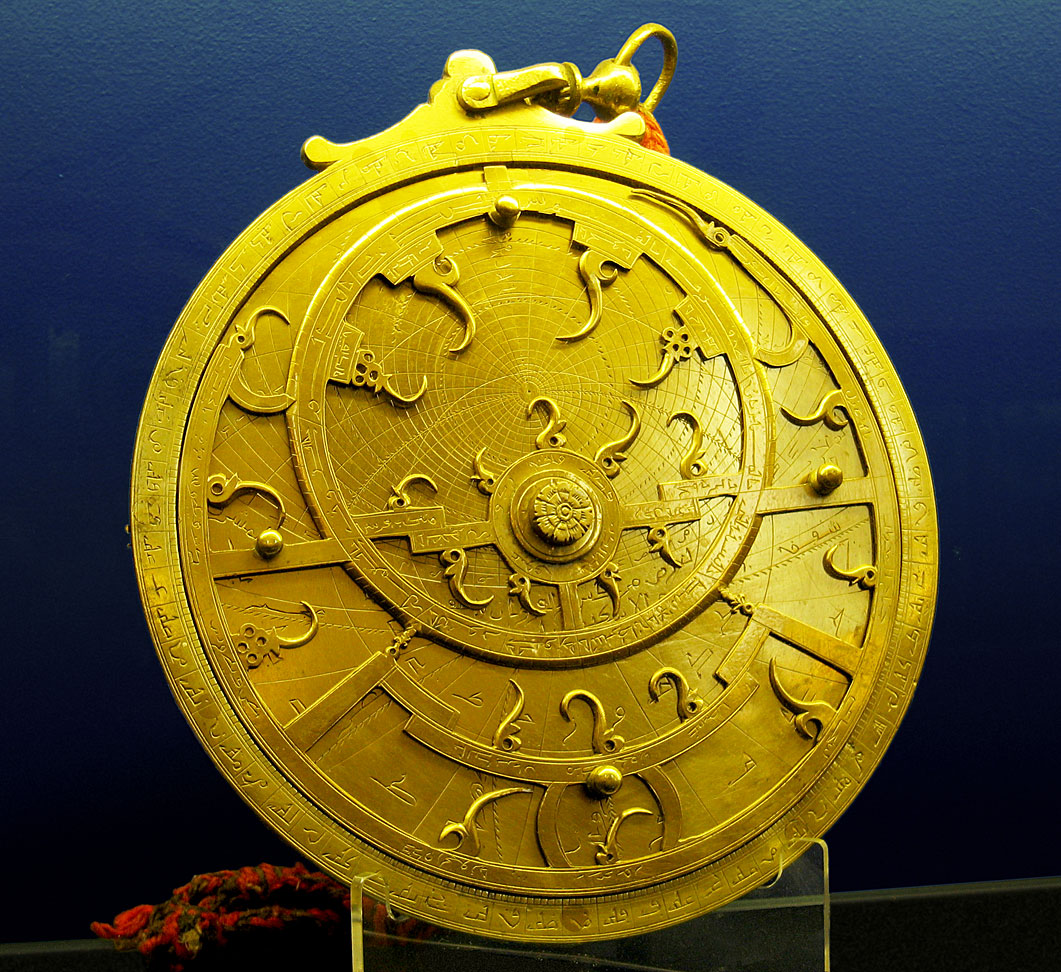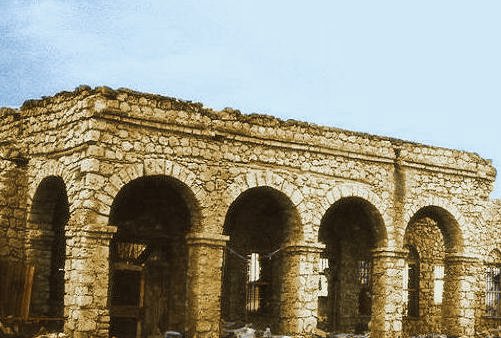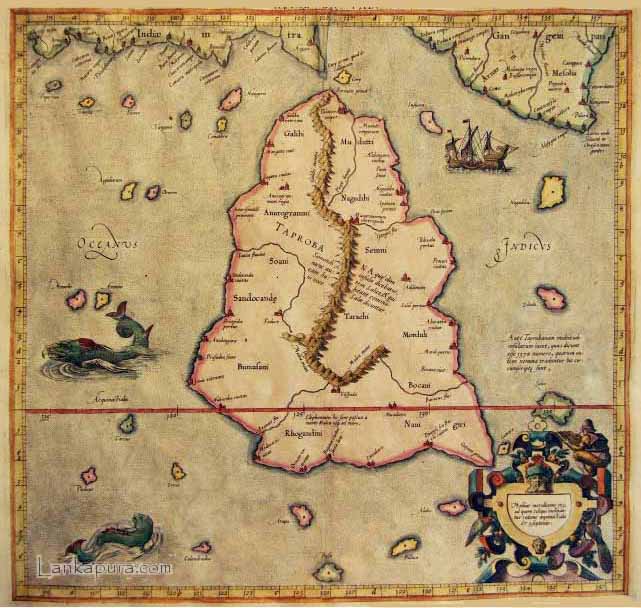|
Seven Climes
The climes (singular ''clime''; also ''clima'', plural ''climata'', from Greek κλίμα ''klima'', plural κλίματα ''klimata'', meaning "inclination" or "slope") in classical Greco-Roman geography and astronomy were the divisions of the inhabited portion of the spherical Earth by geographic latitude. Starting with Aristotle (''Meteorology'' 2.5,362a32), the Earth was divided into five zones, assuming two ''frigid'' climes (the arctic and antarctic) around the poles, an uninhabitable ''torrid'' clime near the equator, and two ''temperate'' climes between the frigid and the torrid ones. Different lists of climata were in use in Hellenistic and Roman time. Claudius Ptolemy was the first ancient scientist known to have devised the so-called system of seven climes (Almagest 2.12) which, due to his authority, became one of the canonical elements of late antique, medieval European and Arab geography. In Medieval Europe, the climes for 15 and 18 hours of longest daylight ... [...More Info...] [...Related Items...] OR: [Wikipedia] [Google] [Baidu] |
Astronomy In The Medieval Islamic World
Islamic astronomy comprises the astronomical developments made in the Islamic world, particularly during the Islamic Golden Age (9th–13th centuries), and mostly written in the Arabic language. These developments mostly took place in the Middle East, Central Asia, Al-Andalus, and North Africa, and later in the Far East and India. It closely parallels the genesis of other Islamic sciences in its assimilation of foreign material and the amalgamation of the disparate elements of that material to create a science with Islamic characteristics. These included Greek, Sassanid, and Indian works in particular, which were translated and built upon. Islamic astronomy played a significant role in the revival of Byzantine and EuropeanSaliba (1999). astronomy following the loss of knowledge during the early medieval period, notably with the production of Latin translations of Arabic works during the 12th century. Islamic astronomy also had an influence on Chinese astronomy and Malian a ... [...More Info...] [...Related Items...] OR: [Wikipedia] [Google] [Baidu] |
Napata
Napata (Old Egyptian ''Npt'', ''Npy''; Meroitic language, Meroitic ''Napa''; grc, Νάπατα and Ναπάται) was a city of ancient Kingdom of Kush, Kush at the fourth cataract of the Nile. It is located approximately 1.5 kilometers from the right side of the river at the site of modern Karima, Sudan. It was the southernmost permanent settlement in the New Kingdom of Egypt (16th–11th centuries BC) and home to Jebel Barkal, the main Kushite cult centre of Amun. It was the sometime capital of the Twenty-fifth Dynasty of Egypt and, after its fall in 663 BC, of the Kingdom of Kush. In 593 BC, it was sacked by the Egyptians and the Kushite capital was relocated to Meroë. Even after this move, Napata continued to be the kingdom's primary religious centre. The city was sacked a second time by the Roman Empire, Romans in 23 BC but was rebuilt and continued as an important centre of the Amun cult. The terms "Napata" or "Napatan period" can also refer to the Kushite polity from ... [...More Info...] [...Related Items...] OR: [Wikipedia] [Google] [Baidu] |
Eritrea
Eritrea ( ; ti, ኤርትራ, Ertra, ; ar, إرتريا, ʾIritriyā), officially the State of Eritrea, is a country in the Horn of Africa region of Eastern Africa, with its capital and largest city at Asmara. It is bordered by Ethiopia in the south, Sudan in the west, and Djibouti in the southeast. The northeastern and eastern parts of Eritrea have an extensive coastline along the Red Sea. The nation has a total area of approximately , and includes the Dahlak Archipelago and several of the Hanish Islands. Human remains found in Eritrea have been dated to 1 million years old and anthropological research indicates that the area may contain significant records related to the evolution of humans. Contemporary Eritrea is a multi-ethnic country with nine recognised ethnic groups. Nine different languages are spoken by the nine recognised ethnic groups, the most widely spoken language being Tigrinya, the others being Tigre, Saho, Kunama, Nara, Afar, Beja, Bilen and Ar ... [...More Info...] [...Related Items...] OR: [Wikipedia] [Google] [Baidu] |
Adulis
Adulis ( Sabaean: ሰበኣ 𐩱 𐩵 𐩡 𐩪, gez, ኣዱሊስ, grc, Ἄδουλις) was an ancient city along the Red Sea in the Gulf of Zula, about south of Massawa. Its ruins lie within the modern Eritrean city of Zula. It was the emporium considered part of the D’mt and Kingdom of Adulis Or Adulis empires. It was close to Greece and the Byzantine Empire, with its luxury goods and trade routes. Its location can be included in the area known to the ancient Egyptians as the Land of the Gods, perhaps coinciding with the locality of ''Wddt'', recorded in the geographical list of the Eighteenth Dynasty of Egypt. History Pliny the Elder is the earliest European writer to mention Adulis (N.H. 6.34). He misunderstood the name of the place, thinking the toponym meant that it had been founded by escaped Egyptian slaves. Pliny further stated that it was the 'principal mart for the Troglodytae and the people of Aethiopia'. Adulis is also mentioned in the ''Periplus of the ... [...More Info...] [...Related Items...] OR: [Wikipedia] [Google] [Baidu] |
Somalia
Somalia, , Osmanya script: 𐒈𐒝𐒑𐒛𐒐𐒘𐒕𐒖; ar, الصومال, aṣ-Ṣūmāl officially the Federal Republic of SomaliaThe ''Federal Republic of Somalia'' is the country's name per Article 1 of thProvisional Constitution, (; ), is a country in the Horn of Africa. The country is bordered by Ethiopia to the west, Djibouti to the northwest, the Gulf of Aden to the north, the Indian Ocean to the east, and Kenya to the southwest. Somalia has the longest coastline on Africa's mainland. Its terrain consists mainly of plateaus, plains, and highlands. Hot conditions prevail year-round, with periodic monsoon winds and irregular rainfall. Somalia has an estimated population of around million, of which over 2 million live in the capital and largest city Mogadishu, and has been described as Africa's most culturally homogeneous country. Around 85% of its residents are ethnic Somalis, who have historically inhabited the country's north. Ethnic minorities are ... [...More Info...] [...Related Items...] OR: [Wikipedia] [Google] [Baidu] |
Saylac
Zeila ( so, Saylac, ar, زيلع, Zayla), also known as Zaila or Zayla, is a historical port town in the western Awdal region of Somaliland. In the Middle Ages, the Jewish traveller Benjamin of Tudela identified Zeila (or Hawilah) with the Biblical location of Havilah. Most modern scholars identify it with the site of Avalites mentioned in the 1st-century Greco-Roman travelogue the ''Periplus of the Erythraean Sea'' and in Ptolemy, although this is disputed. The town evolved into an early Islamic center with the arrival of Muslims shortly after the Hijrah. By the 9th century, Zeila was the capital of the early Adal Kingdom and Ifat Sultanate in the 13th century; and also a capital for its successor state the Adal Sultanate, it would attain its height of prosperity a few centuries later in the 16th century. The city subsequently came under Ottoman and British protection in the 18th century. Up until recently Zeila was surrounded by a large wall with five gates: Bab al Sahil and B ... [...More Info...] [...Related Items...] OR: [Wikipedia] [Google] [Baidu] |
Avalites
Avalites ( grc, Αὐαλίτης or ) was a small port in what is today Somalia that dominated trade in the Red Sea and Mediterranean. Location There has been a series of disputes as to the location of Avalites According to the ''Periplus of the Erythraean Sea'', Avalites was located west of Adulis near the strait of Bab-el-Mandeb. Now called Zeila, it is located in western Somaliland, near the border with Djibouti. Avalites was a small port located in the east of Barbara, very close to neighbouring Arabian city-states such as Muza and Ocelis. However, early Arab historians disagree with ''Periplus, they say'' that Avalites wasn’t located in the Barbra region, but it was located in the heart of Axum, Assab. ''Periplus'' mentions that Avalites was the first port in the Barbar region, followed by Malao, Mundus and Mosylon. Jewish traveller Benjamin Tudela identified Avalites as a possible location of Havila. Origins The people of Avalites were probably proto-Somalis, ca ... [...More Info...] [...Related Items...] OR: [Wikipedia] [Google] [Baidu] |
Sri Lanka
Sri Lanka (, ; si, ශ්රී ලංකා, Śrī Laṅkā, translit-std=ISO (); ta, இலங்கை, Ilaṅkai, translit-std=ISO ()), formerly known as Ceylon and officially the Democratic Socialist Republic of Sri Lanka, is an island country in South Asia. It lies in the Indian Ocean, southwest of the Bay of Bengal, and southeast of the Arabian Sea; it is separated from the Indian subcontinent by the Gulf of Mannar and the Palk Strait. Sri Lanka shares a maritime border with India and Maldives. Sri Jayawardenepura Kotte is its legislative capital, and Colombo is its largest city and financial centre. Sri Lanka has a population of around 22 million (2020) and is a multinational state, home to diverse cultures, languages, and ethnicities. The Sinhalese are the majority of the nation's population. The Tamils, who are a large minority group, have also played an influential role in the island's history. Other long established groups include the Moors, the Burghers ... [...More Info...] [...Related Items...] OR: [Wikipedia] [Google] [Baidu] |
Taprobana
Taprobana ( grc, Ταπροβανᾶ) and Taprobane (, ) was the name by which the Indian Ocean island of Sri Lanka was known to the ancient Greeks. History Reports of the island's existence were known before the time of Alexander the Great as inferred from Pliny. The treatise ''De Mundo'', supposedly by Aristotle (died 322 BC) but according to others by Chrysippus the Stoic (280 to 208 BC), incorrectly states that the island is as large as Great Britain (in fact, it is only about one third as big). The name was first reported to Europeans by the Greek geographer Megasthenes around 290 BC. Herodotus (444 BC) does not mention the island. The first Geography in which it appears is that of Eratosthenes (276 to 196 BC) and was later adopted by Claudius Ptolemy (139 AD) in his geographical treatise to identify a relatively large island south of continental Asia. Writing during the era of Augustus, Greek geographer Strabo makes reference to the island, noting that "Taprobane send ... [...More Info...] [...Related Items...] OR: [Wikipedia] [Google] [Baidu] |
Antipodes
In geography, the antipode () of any spot on Earth is the point on Earth's surface diametrically opposite to it. A pair of points ''antipodal'' () to each other are situated such that a straight line connecting the two would pass through Earth's center. Antipodal points are as far away from each other as possible. The North and South Poles are antipodes of each other. In the Northern Hemisphere, "the Antipodes" may refer to Australia and New Zealand, and Antipodeans to their inhabitants. Geographically, the antipodes of Britain and Ireland are in the Pacific Ocean, south of New Zealand. This gave rise to the name of the Antipodes Islands of New Zealand, which are close to the antipode of London. With the exception of a part of the Perth metropolitan area near Baldivis and Rockingham that is antipodal to Bermuda, the antipodes of Australia are in the North Atlantic Ocean, while parts of Spain, Portugal, France and Morocco are antipodal to New Zealand. Approximately 15% of ... [...More Info...] [...Related Items...] OR: [Wikipedia] [Google] [Baidu] |






